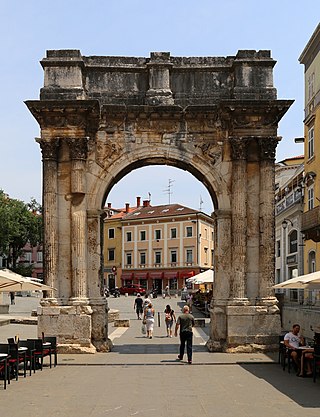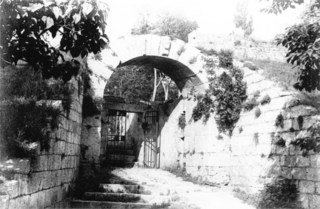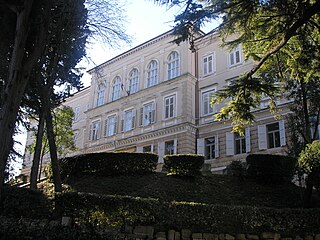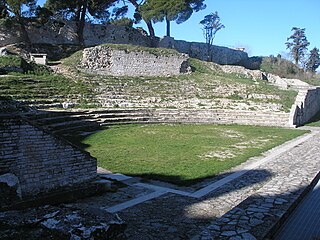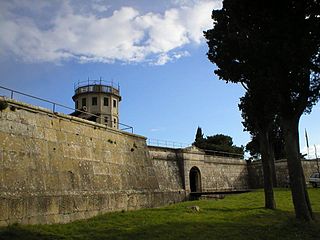Self-guided Sightseeing Tour #1 in Pula, Croatia
Legend
Guided Free Walking Tours
Book free guided walking tours in Pula.
Guided Sightseeing Tours
Book guided sightseeing tours and activities in Pula.
Tour Facts
0.8 km
3 m
Experience Pula in Croatia in a whole new way with our free self-guided sightseeing tour. This site not only offers you practical information and insider tips, but also a rich variety of activities and sights you shouldn't miss. Whether you love art and culture, want to explore historical sites or simply want to experience the vibrant atmosphere of a lively city - you'll find everything you need for your personal adventure here.
Activities in PulaIndividual Sights in PulaSight 1: Arch of the Sergi
Get Ticket*Arch of the Sergii is an Ancient Roman triumphal arch located in Pula, Croatia. The arch commemorates three members of the Sergii family, specifically Lucius Sergius Lepidus, a tribune serving in the twenty-ninth legion that participated in the Battle of Actium and disbanded in 27 BC. This suggests an approximate date of construction: 29–27 BC. The arch stood behind the original naval gate of the early Roman colony. The Sergii were a powerful family of officials in the colony and retained their power for centuries.
Sight 2: Herkulova vrata
The Gate of Hercules is the oldest preserved monument of Roman architecture in Pula, built in the middle of the 1st century BC. Kr.
Sight 3: Archaeological Museum of Istria
The Archaeological Museum of Istria is a special museum founded in 1902 in Pula. It covers an area of 3600 m². The museum contains three collections: prehistoric, ancient, and late antique and medieval. Dislocated objects within the Museum include the site of Nesactium. Monuments in the city of Pula under the care of the Museum are: the Amphitheater, the Temple of Augustus, the Temple of Diana, the mosaic "The Punishment of Dirka", the Arch of Sergius, the Double Gate, the Gate of Hercules and the Basilica of St. George. Maria Formosa.
Sight 4: Malo rimsko kazalište
The Small Roman Theatre in Pula was probably built in the 1st century on the eastern slope of the Pula hill at the foot of the old Castrum. It occupied a much larger area than what is visible today, because archaeological research has not been fully completed.
Sight 5: Historical and Maritime Museum of Istria
The Historical and Maritime Museum of Istria is located on the highest hill in Pula, at an altitude of 32.4 meters, between the sea and the hills of the Arena, Zara and St. Michael, in an adapted Venetian fortress. Since 1961, it has housed the working and exhibition rooms of the Historical and Maritime Museum of Istria, which was founded on December 31, 1955 as the Museum of the Revolution.
Share
How likely are you to recommend us?
Disclaimer Please be aware of your surroundings and do not enter private property. We are not liable for any damages that occur during the tours.
GPX-Download For navigation apps and GPS devices you can download the tour as a GPX file.
